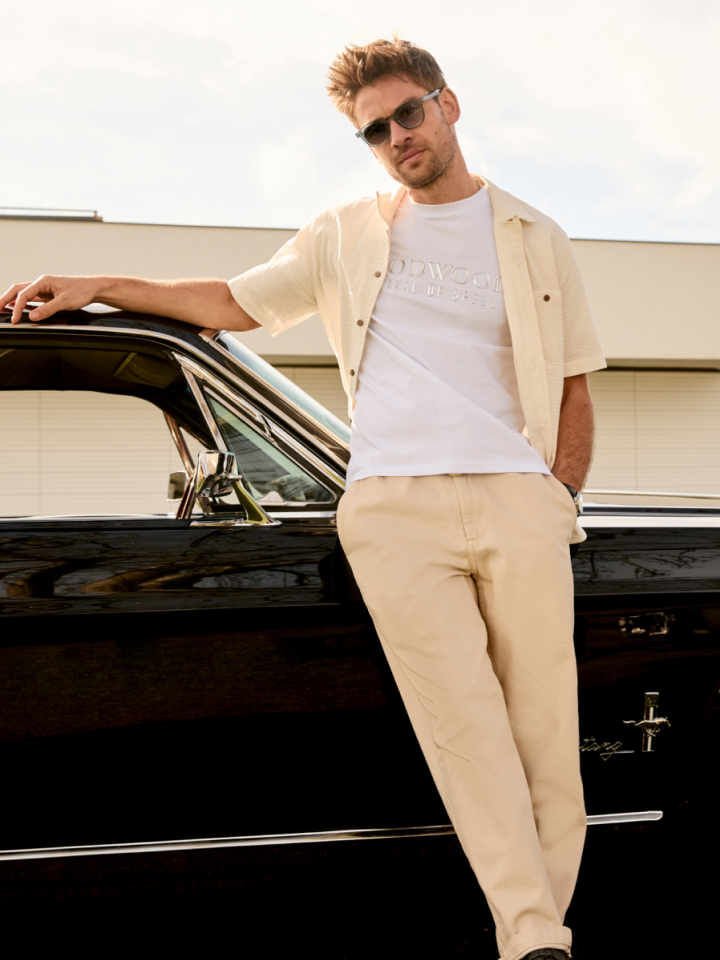John Simister: Recounting the birth of the Aston Martin DB7 with Ian Callum
 John Simister
John Simister
Nowadays, designing a new car is all about process, micro-managed, computer-aided and budgeted to the last fraction of a pound/euro/dollar/yen. Long ago it used to be about rough sketches by a design and engineering genius, diligent draughtsmen reinterpreting them to make them work, sucking it and seeing. In the early 1990s, it was a bit of both.

That was the watershed era, when old slid into new. And it could hardly be better illustrated than by the Aston Martin DB7. In this car, iconography met expediency, and there has never been a better way to make brand snobs feel uncomfortable about their cars' impure genes. Nevertheless, out of a mish-mash of components drawn from parts bins scattered worldwide through the former Ford empire came the car that saved Aston Martin. And a fine-looking machine it remains to this day.
Its shape was the work of Ian Callum, the first complete car that today's Jaguar design director designed. The story of the DB7's gestation from an abandoned Jaguar project contracted out to Tom Walkinshaw Racing is well known, but at the Walter Hayes Memorial Lecture, held at the RAC Club in Pall Mall on January 24th and organised by the Aston Martin Heritage Trust, Callum is giving us the insider's view as we've never quite heard it before.
Walter Hayes was Ford's PR supremo throughout the 1960s, and a driving force behind the GT40 and Ford's funding of the Cosworth DFV engine. His final role before retirement was to chair Aston Martin, by then Ford-owned, after Victor Gauntlett stood down.
Ian Callum was working for Tom Walkinshaw – racing driver, car builder and converter, industry consultant – shortly before Ford bought Aston Martin, which was building just 30 to 50 cars a year at the time. It was in deep mire, and Walkinshaw saw an opportunity.

'So I designed an Aston based on a Ford Thunderbird,' Callum tells us. Groans suffuse the RAC Club.
'Then I tried an Aston front end on a Ford Scorpio estate, but that didn't work either.' Louder groans.
Jaguar, meanwhile, had just stopped developing the intended new F-type, codenamed XJ41. It had got too big, heavy and expensive, and Walkinshaw saw another opportunity.
'He owned 51 per cent of Jaguar Sport, and he had a spare XJS. "I want to get the feeling of an XJ41 on the XJS platform," he said. "Can you do it?" I had to change the proportion, bring the windscreen forward, give it a shorter tail... and then Tom started to realise that Jaguar's senior management didn't want this car.' That's because they had other ideas, which became the XK8.
'So we were working in a bit of a vacuum. Tom came in with Walter Hayes. "That looks interesting," said Walter. "Can you make an Aston out of this?" So we started on the clay model. The Jaguar guys thought they were going to get a Jaguar out of it, so we didn't show them the front. And of course I, of all people, would never know what a Jaguar should be...'

As the politics played out, what had been Walkinshaw's Jaguar Project XX became Aston Martin Project NPX. An evening of gin consumption helped Callum and his clay modeller, Andrew Miles – 'the best clay modeller in the world' – to get the rear three-quarter view's shape right, and then there was the matter of the lights, the handles and all the other vital components a car has to have but which are very expensive to create.
'To tool up for a tail-light can be maybe £450,000, so we went to Ford's parts bins. The tail-lights are from a Mazda 323F.' Groans over the 2011 Club Burgundy, again.
'Walter really wanted chrome door handles, and they had to be flush, and the only ones in the Ford parts bin were from a Mazda 323 wagon.' Anguish is really setting in at the RAC now; this is chipping away badly at the notion of tailored motoring under which a DB7 owner likes to bask. With the confirmation of Mazda MX-5 front sidelight/indicator units and interior handles, Ford Granada vents and re-faced Jaguar XJS dials comes the laying bare of what the DB7 really is: an agglomeration of expedience.

But that is to sell it seriously short, because a DB7 is a lot more than the sum of its parts. It still looks terrific, more so in the original supercharged straight-six guise before the V12, its higher pace calling for a facelift with less lift-inducing aerodynamics, arrived and spoilt the delicacy. 'I don't want to do this,' Callum told Bob Dover, now running Aston Martin after Hayes' retirement. 'You'll have to, or I'll get someone else to do it,' Dover retorted. Which, Callum reckoned, would have made him feel even worse.
The DB7 was launched at the 1994 Geneva show, even before it had achieved Ford approval ('Don't worry about that,' Walter Hayes had told the Aston team), and everyone loved it. Today it remains the most affordable Aston Martin apart from the tiny Toyota iQ-based Cygnet, yet despite its mongrel genes, it laid the foundation for today's Aston Martin company. Without the DB7, the company might not exist today. To me, 27 years on, that surely says 'classic car'.
It's a tale of a tiny company able to move more deftly than its corporately quagmired parent could ever notice and allowed to do so because Ford of Europe's then boss, Jac Nasser, was a petrolhead. Nasser has now bought a DB7 with his own money. 'I hope it's an early one,' quips Callum.
Aston Martin
DB7
John simister
ian callum































































